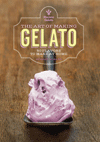The art and science of homogenization for ice cream
Homogenization offers key benefits to the mix in advance of final pasteurization.

Few processes are as critical, misunderstood and poorly executed as homogenization. Proper homogenization is both an art and a science.
Homogenization offers key benefits to the mix in advance of final pasteurization, aging, whipping, freezing and hardening, including reduction of fat droplet size, adding significant fat droplet surface area, and allowing for positive influences on the physical/chemical condition of proteins, phospholipids and any added emulsifiers. This creates a uniform fat-in-water emulsion preconditioned to “de-emulsify” (i.e., partial fat agglomeration) as needed. It all begins with milkfat.
Whole milk contains 3.5-4.0% milkfat in the form of globules — i.e., milkfat droplets coated with a natural “membrane” composed of milk proteins and phospholipids. Globules vary from 5 -15 microns in diameter and may be found partially pre-agglomerated to each other. This is a non-uniform fat-in-water emulsion, which will separate with time.
Homogenization greatly reduces the size of fat globules while increasing their number and exposed surface area. Surface area increases are significant. If a 10-micron fat globule is reduced to 1.0 micron, 1,000 fat globules are created with much more surface area to allow for enhanced (and desirable) partial fat agglomeration.
Then add mix aging and freeze concentration during whipping/freezing. Homogenization greatly enhances the structure and structural strength/integrity of any final ice cream via partially agglomerated fat globules. Note: Too much of a good thing can be bad, as over-agglomeration can create areas of structural weakness.
No one-size-fits-all approach
Conditions of homogenization may, and do, vary, and are critical as well. Standard ice cream mix (8-12% milkfat) should be homogenized with the second stage set first, classically at 500 psi, and the first stage then brought up to 2,500 psi (per the pressure gauge.) This is commonly specified as 2,000/500 psi homogenization.
Higher-fat mixes require less first-stage pressure, as higher fat means greater opportunity for fat agglomeration. In most homogenizers, the first stage homogenizes; the second stage prevents post-homogenization clumping.
Reduced/low-fat mixes and sherbets may be run with a single stage set to 1,000 psi. However, if the mix contains a shear-activated hydrocolloid such as microcrystalline cellulose, then the first stage should always be at least 2,000 psi, regardless of fat content.
As fat content is reduced further, the need to homogenize becomes more critical. Depending on the exact fat content, the mix may require much more applied pressure(s) to increase the number of fat droplets post-homogenization. Technically, this makes sense; operationally, it might not be an option.
Single-stage homogenizers do exist, generally applying ~1,500 psi. These might be adequate for some ice creams, but are less than optimal compared to classical two-stage units.
Vegetable-fat-based mixes follow the same guidelines relative to pressures despite significant compositional and functional differences in fat/oils (amount/type) and size and functionality of proteins used.
It is sometimes useful to assist mix emulsification by actually adding an emulsifier. Critical are the amount/type of emulsifier applied, the extent of fat agglomeration desired and, ultimately, the structure to be achieved in the final ice cream.
Homogenization temperature is also important. Crucial to full effectiveness is having all fat, no matter the source, as liquid. Generally, when the homogenizer is placed after final heating (minimum 175 degrees Fahrenheit), there is no solid fat.
However, some homogenizers are placed after the regen section of the heat exchanger, where the temperatures may be 150-155 degrees Fahrenheit in advance of the actual pasteurization temperature. Achieving such temperatures can be problematic, as some mono-/diglycerides have high melting points. Rather than re-arrange the process flow, stabilizer/emulsifier suppliers should be able to provide an emulsification system that melts in this range and functions as needed.
Heating the mix before homogenization also reduces the activities of naturally occurring enzymes (e.g., lipases) that might expose fats/oils to preemptive oxidation across homogenization. Another advantage of high-temperature homogenization (e.g., 175 degrees Fahrenheit+) is that the mix will have a lower viscosity and be less prone to clumping pre-whipping/freezing.
Classically, if more than 80% of the fat globules are < 2.0 microns, homogenization is considered “acceptable.” Actually, today’s equipment should obtain almost 100% of the fat globules at 1.0 micron.
Maintenance matters
Homogenizer maintenance becomes critical. Valves should be inspected monthly or on the same inspection schedule as freezer blades. Checking for homogenization efficiency via microscope or particle-size analyzer can be a key mix metric. Finally, visually check the homogenizer during operation. Any leaked mix past the valve pistons represents a slight loss of pressure and impending excess wear of the piston packing material, not to mention potential microbiological contamination issues.
Well-designed and executed homogenization helps reap benefits in the final whipped/frozen/hardened ice cream. These benefits include resistance to heat shock, implied shelf-life extension and desirable/consistent eating qualities. Given these qualitative factors, there are many quantitative ways to manage homogenization so as to deliver desirable finished eating quality.
Looking for a reprint of this article?
From high-res PDFs to custom plaques, order your copy today!








